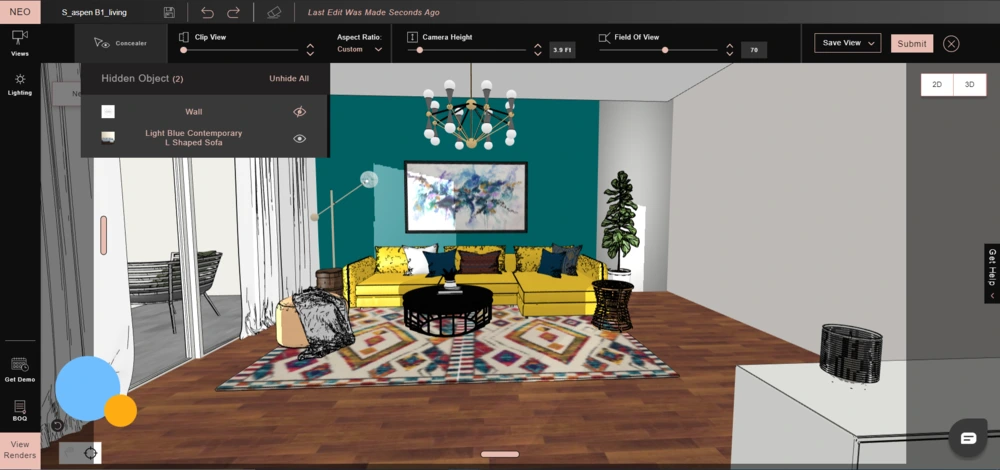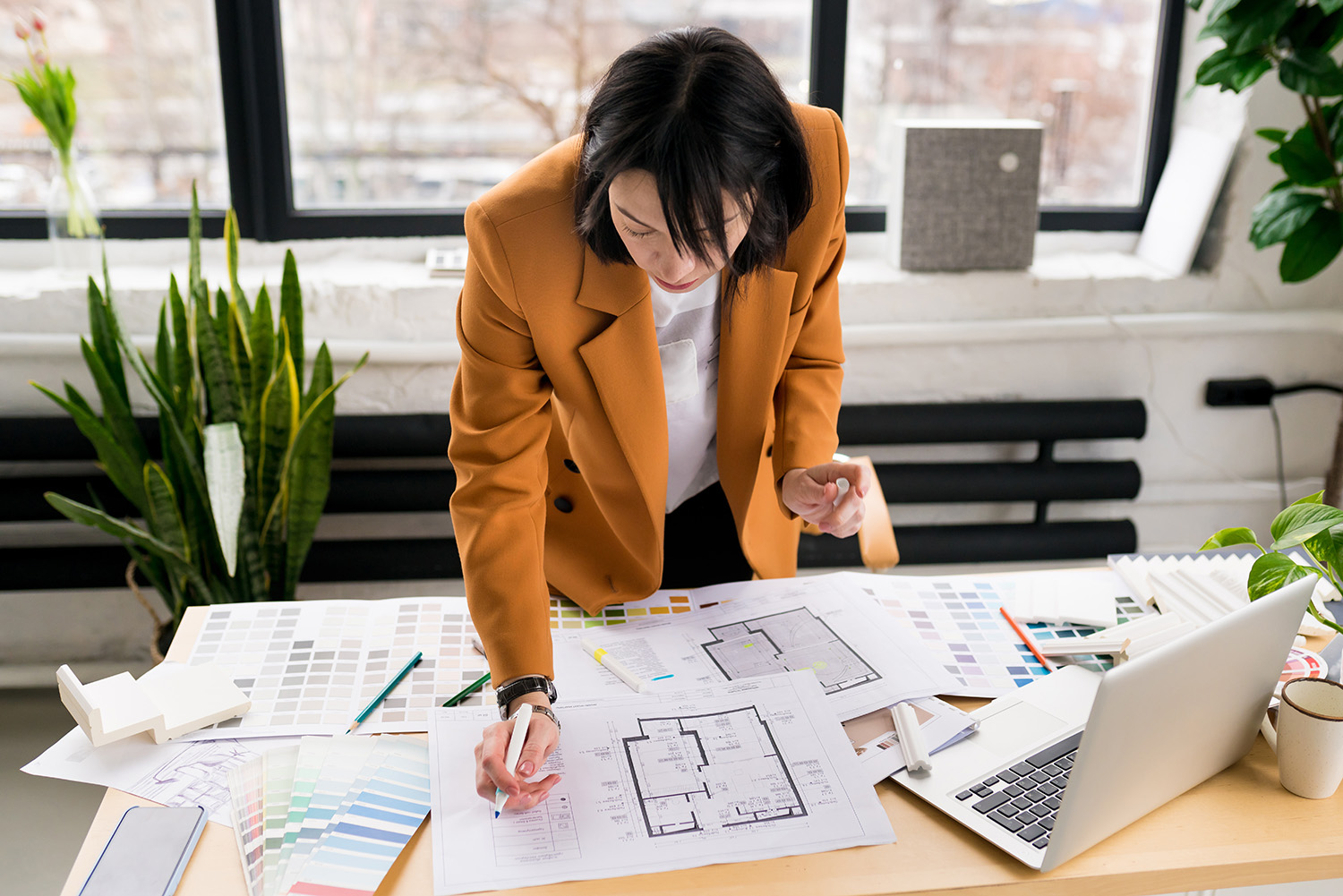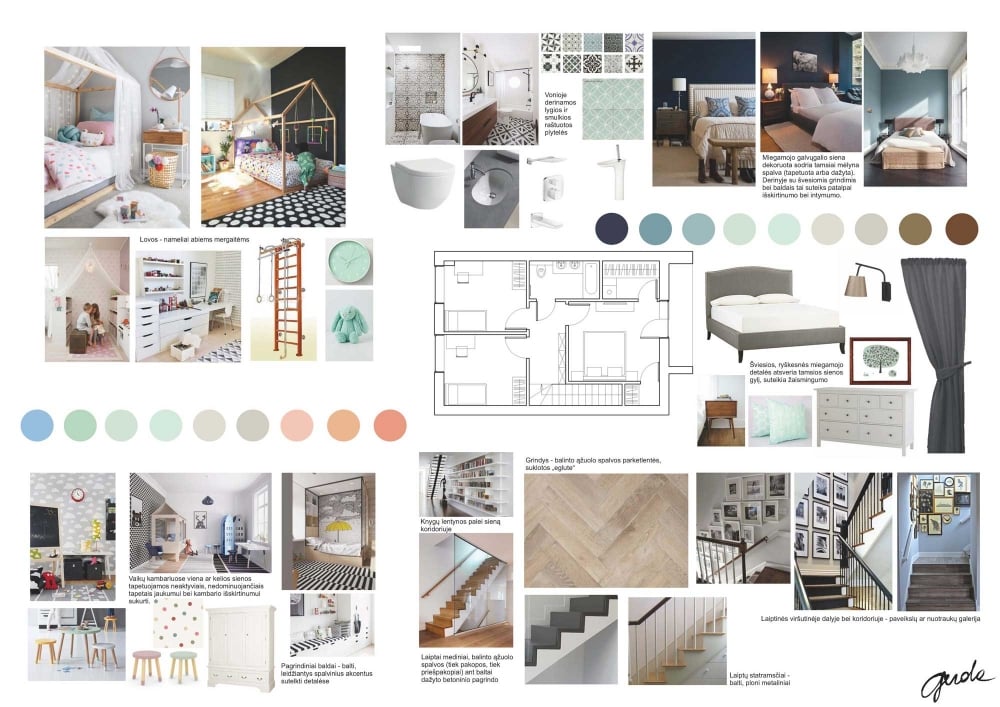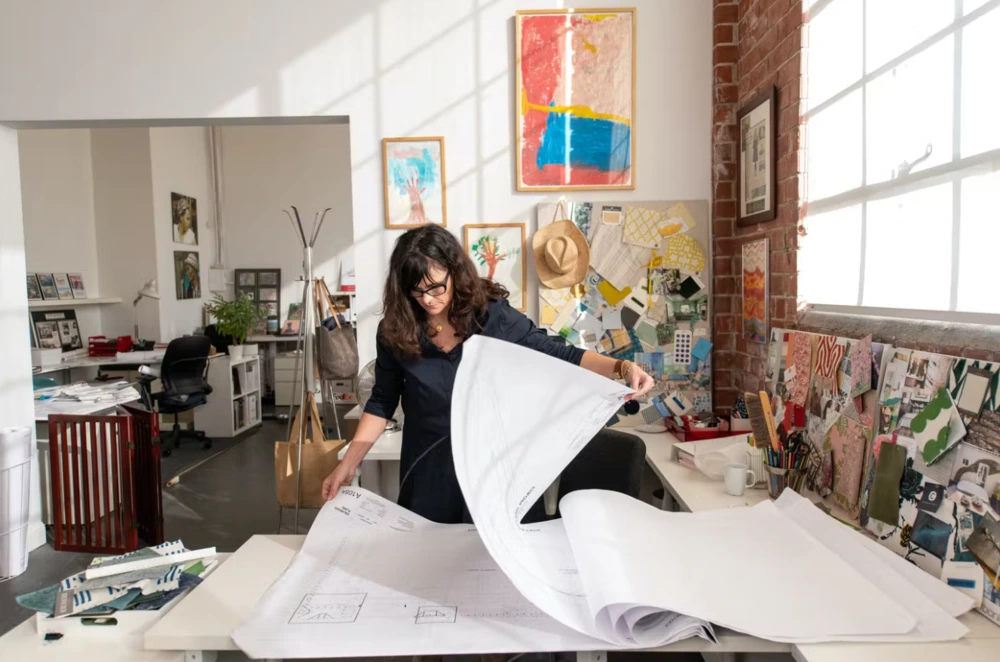Phases of Interior Design
Unless you are a designer yourself, you may often think that interior design professionals are some sort of wizards capable of churning out magic every time.
But it is far from the truth. Like any other professional service, interior designing involves a lot of planning and accurate execution.
From talking to the customer and understanding what they are trying to emphasize to finding the right team members and allotting them the tasks as per their expertise, all of it is a result of good planning and teamwork.
Given the range of diverse operations involved, interior design professionals prefer to break down interior design project work into phases. It helps to have a clear head and place each item as it should appear and accordingly allot the tasks to team members.
It also helps to stay accountable and have a constant tab on how much of the work is done and what is left.
Do you wish to know more about how to phase your design work? This article discusses that and gives you a walk-through of the grind that goes into the various interior design project phases.
Also, Read: How to Write an Interior Design Proposal to Win Your Clients?
What are the Phases of Interior Design?
Interior design is a complex task and often requires expertise across areas, such as mapping, drawing, ideating, and executing. So, instead of trying to do it all together, designers often break the entire process into manageable steps or phases.
Here are the different interior design phases in a typical project:
- Inquiry
- Programming
- Concept development
- Design development
- Contract documentation
- Construction administration
Also, Read – A Guide To Client Process Document for Interior Designers
What is Involved in Each Phase of Design?
The reason behind dividing each interior design services project into several phases is to bring clarity to the entire work. Here is what goes behind each design phase –
1. Inquiry
The inquiry is the phase where you start thinking of a possibility of an overhaul or a new interior design. If you are doing it for a client, they haven’t signed a interior design contract or made any payments, and you have not started working on the project. All you have done is get on a discovery call and forward a proposal.
Here is the set of tasks you can expect to perform during the inquiry phase –
- Gauging the project’s viability and assess if it matches all your selection criteria.
- Creating a rough cost sheet and adding profits to create an optimal pricing proposal.
- Contacting subcontracting partners to confirm their availability for the project.
Image Credit: thoughtco.com
2. Programming
Once you have forwarded the proposal and have it approved by the client, you enter the next stage, the programming stage or the phase where you ask the right questions and define your goals.
Here, you want to know as much as possible about the project, discuss every minute detail with the client, and understand the desired outcome. So, it includes identifying the client, the project’s nature (holiday home, office, personal space, etc.), location, purpose, and creative needs.
This phase is about expanding your comfort zone and creating something that the client may have yet to discover on their own.
Here is the set of tasks you can expect to perform during the programming phase –
- Gathering finer details about the project, such as measurements, snaps, existing space availability and condition, and more about the site.
- Preparing keynotes from the interview with the client, such as any special requirements, specific requests, or more.
- Conducting basic project research, such as legal considerations, codes, any restrictions concerning the location, or construction constraints.
- Creating a delivery schedule and breaking it down task-wise, area-wise, floor plan-wise, or as feasible.
- Breaking down budgetary projections roughly across major cost estimation points, such as labor, raw material, etc.
- Setting final deliverables for the client along with project scope, design problems, solutions, and preliminary budget projections and getting it signed and approved by the client.
Also, Read: How Do Designers Get Interior Design Clients On A Low Budget?
Image Credit: nimble.com
3. Concept Development
Once the programming phase has been established, you move on to the concept development or the schematic design phase. It starts with ideating, wherein you create potential design solutions (digitally, verbally, sketched, or written).
Then, filter out the redundant design ideas until you identify the design or a couple of potential design solutions for the project management.
Once the design statement is ready, you can begin preliminary discussions with the local municipality to understand its feasibility in the real world. You engage in multiple conversations with the client to refine the project goals and deliverables and find appropriate solutions to potential problems.
Here are the tasks involved in the concept development phase –
- Drawing up diagrams for initial space planning adjusted to incorporate the available scale and relationships, layout, functionality, circulation path, and adjacencies. You should create and consider multiple options that match the given parameters before zeroing in on the best ones to be presented to the client.
- Preparing multiple interior finish recommendations that fit the practicality requirements and cater to budgetary constraints. These will include tiles, lighting fixtures, window treatments, incorporating wallpapers, wood flooring, and more.
- Having a look at the budget and revising it if needed.
- Implementing construction documentation to lay down rough concept layouts with space for revisions.
- Finalizing the design concept to move forward and get the client’s written approval.
Image Credit: gerdainterjeras.com
4. Design Development
After the concept development phase is complete and you have the final floor plan, the next step is to delve deeper into the design development phase. The phase follows after a single path has been identified to move forward, and you need details to begin the tasks.
Here, you start providing exterior elevations, figure out the finishes (internal and external), and decide on other placements, such as window treatments, kitchen layout, millwork, stair locations, verandah, and more.
In addition, you also have the task of figuring out cabinetry designs and finalizing lighting locations and tile installation methods.
The design development phase includes the following tasks –
- Covering the finer details of the floor plan, such as fixture recommendations, finish material for flooring, etc.
- Drawing up initial layouts for cabinets in the kitchen and bathroom, as well as the initial layouts for appliances and equipment.
- Finalizing specific selections as requested by the client.
- Preparing a list of deliverables with finer details, such as specific fixture and equipment selections and finish choices.

5. Contract Documentation
Now, the interior design team is responsible for completing the architectural and design drawing specs to ensure a seamless and clutter-free design approach. It also lets you maintain design integrity throughout the project.
In this phase, the primary focus is refining solutions, gathering as much information as possible for the design, and optimizing it all. For example, the package may include floor plans, the site plan, the window schedule, finishes, interior and exterior elevations, and more.
You can have different documents covering interior and exterior specifications, materials, finishes, and installation methods. For example, if you are building a master bedroom layout, it should include space for your bed, lighting, furniture, storage, and color theme.
Here are the most common contract documentation phase tasks –
- Creating documents and construction drawings to invite bids from contractors to help them construct the project and get any permits as necessary.
- Establishing finer details for floor plans, cabinetry, elevations, lighting, window schedules, lighting plans, and design styles.
- Reviewing and coordinating different interior design details, such as electrical, mechanical, and other parts of the project scope.
- Securing an architect or a specialist to review the plans depending on the project needs and finalize the structural stability.
- Finalizing contract documents for bidding with space for further changes as needed.
- Getting the contract documentation approval from the client for the final design.
Also, Read: 12 Best Time Management Tips for Interior Designers
Image Credit: weareindy.com
6. Construction Administration
After the final design gets the nod from the architect and the client, the project comes to life.
Then, you seek permissions, if required. You also provide the necessary drawings to submit the building permits and prepare a tender with deadlines and key dates along with the project description. In addition, you can also create a costing sheet that highlights the costs across the major construction categories.
You invite bids from the contractors, and the designer creates detailed project documentation. This will include a schedule of works, choreographing construction, installations, and finishing.
You choose the best offers and order all the materials, furnishings, and accessories for your interior design work. Your team then undertakes the inspection of the delivered items, returns or repairs damaged items and marks the usable items to the relevant project and placement.
Here are the major tasks carried out during the construction administration interior design phase –
- Bids are sought from contractors for the different project needs.
- If there are permits involved, the contractor will secure the necessary permits once they get hired.
- After that, the necessary items are ordered. It includes building materials, finishes, plumbing, lighting fixtures, window treatments, and everything else needed.
- Then, the contractors and sub-contractors start the actual work.
Also, Read: 10 Essential Tools for Interior Designers
Image Credit: houzz.com
How to Manage Each Phase of the Design Effectively?
Humans often perform better when they break down complex tasks into manageable sub-tasks. The interior design phases have thus become an industry standard and are used in almost every project to help ideas assume shape in the real world.
The most vital thing that an interior designer has to strive for is to strike the right balance between form and function. For this, they can follow the seven key principles of the interior design process –
- Balance
- Harmony
- Rhythm
- Proportion and scale
- Emphasis
- Contrast
- Details
Following these principles would allow the designer to execute each phase with greater efficiency and ensure that the overall task matches or exceeds the client’s expectations.
Also, Read: How To Start An Interior Design Business?
Some Tips on Phasing for 2023
Here are some tips to help you phase your interior design phases better –
1. Set a project schedule and communicate the timelines with utmost clarity
With the focus on managing client expectations, the first thing to undertake is to have a project schedule. It should clearly emphasize deadlines for each phase along with a proposed completion.
2. Set a daily routine
When a project is expected to take significant time to complete, having a set routine goes a long way in helping you execute your processes and complete them within deadlines. Make sure you have enough room to revisit the work done and make revisions, if any.
3. Improve budgeting skills
Most interior design projects have a budget. Even luxury designers must stick to a rough budget established before the work starts. Typically, your budgeting skills improve with experience. It involves breaking down the budget into critical and not-so-critical parts and accordingly paying attention to the money spent.
4. Improving work delegation
Most experts are expert delegators, and that’s what allows them to manage their work effortlessly. Depending on your priorities, you can delegate work based on your team’s strengths. It would help you execute the client task and fulfill all your client’s needs without compromising quality.
5. Find software to automate your needs
When working on a large project, you will need to automate whatever you can to make the task more manageable. Having interior design software such as Foyr Neo, which is a one-stop solution for your interior design projects, enables you to save significant time while optimizing your team’s productivity.
Design Your Client’s Dream Space Quickly and Efficiently in Foyr Neo
Breaking your interior design process into manageable phases helps streamline your workflow and execute all your tasks in a planned manner. It also is a crucial enabler in helping interior design professionals be creative and deliver stunning results for their clients.
If you need help managing your interior design tasks, we suggest following the phases method and using tools like Foyr Neo to help automate the interior design process. The software offers you the luxury to design from anywhere, partner with your team members, and give life to your 2D plans within minutes.
In addition, Foyr has a thriving community of professionals and clients, which can be handy for getting significant inputs to improve your project ideas and optimize the resources you have at your disposal.
Click here to explore Foyr Neo free for 14 days.
FAQs
1. What are the phases in interior design?
From conceptualizing to executing to giving the final touches, we can divide the interior design process into several phases. This allows designers to categorize the deliverables as different parts and better execute the overall task.
2. What are the six phases of an interior design project?
We can divide the entire interior design into six phases, as listed below –
- Inquiry
- Programming
- Concept development
- Design development
- Contract documentation
- Construction administration
3. What are the seven principles of interior design?
Here are the seven key principles of interior design –
- Balance
- Harmony
- Rhythm
- Proportion and scale
- Emphasis
- Contrast
- Details
4. How do I start an interior design process?
The first step to starting an interior design process is to take the measurements of the area to be designed. The designer can then plan the furniture, objects, or any other item around which the entire project will be planned. Identifying the lighting conditions and planning the colors is the next task. After that, the designer has to conduct a patch test to finalize the colors. This way, the designer can begin their interior design process.















